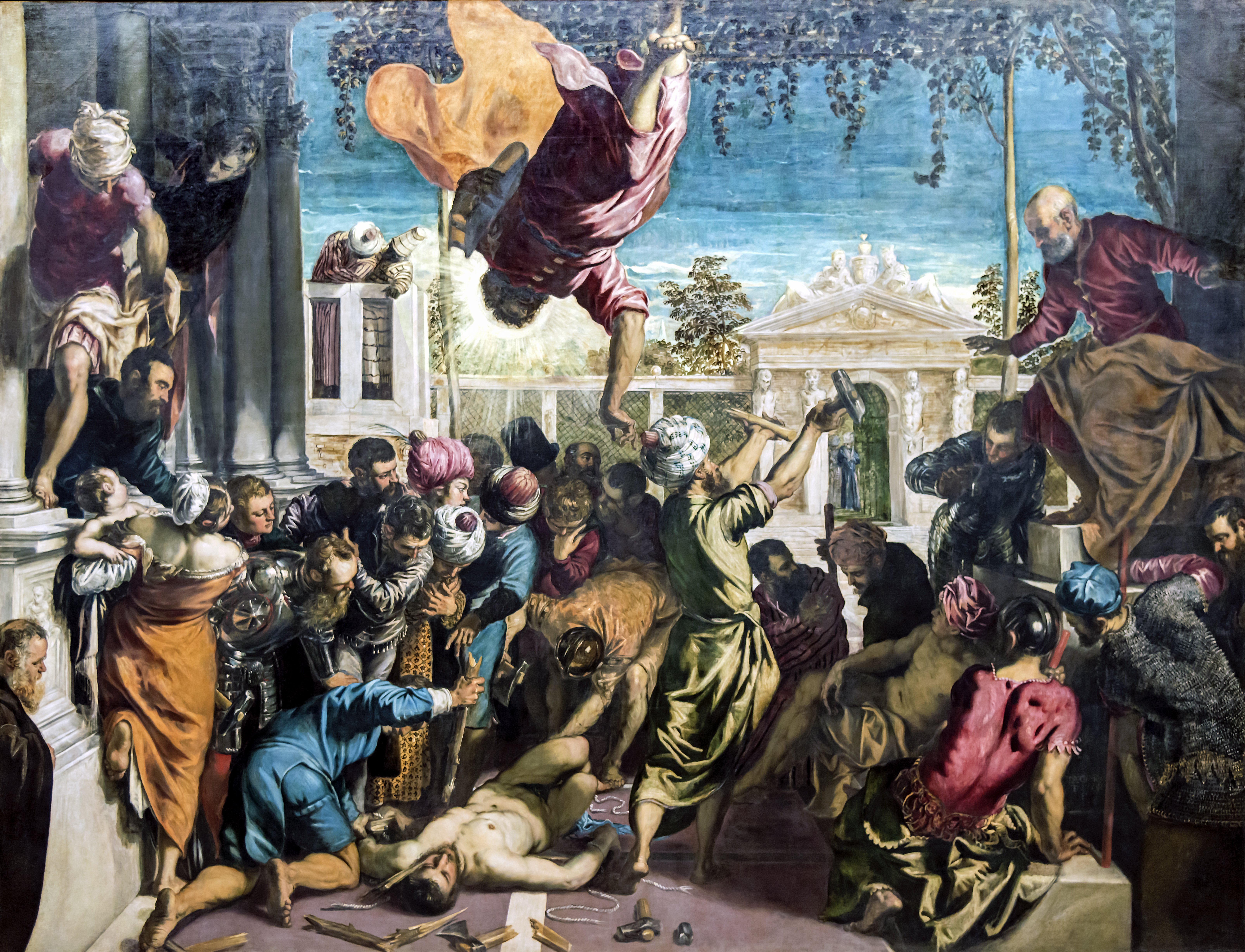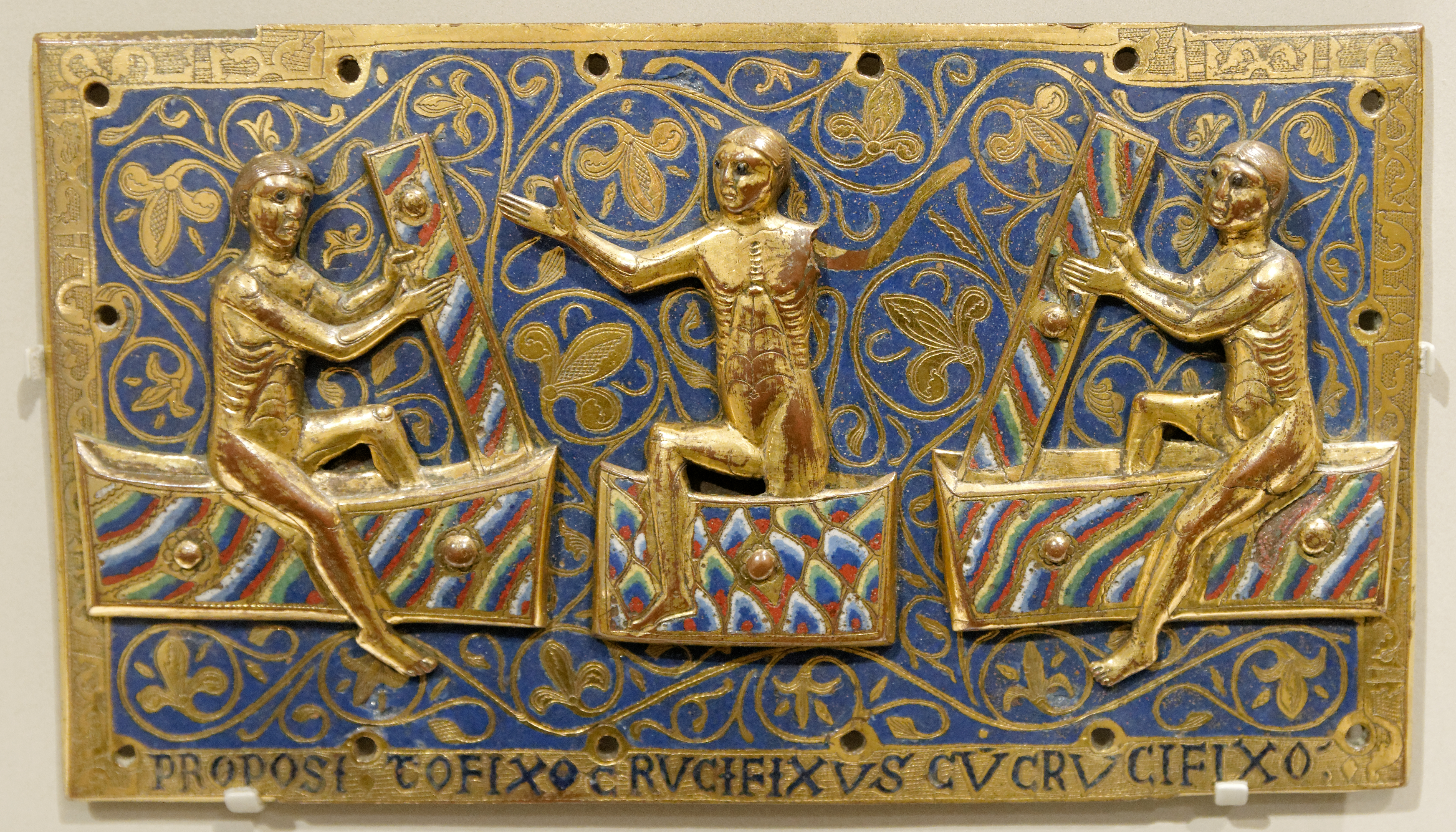|
Saint Quadragesimus
Saint Quadragesimus (d. end of 6th century) was, according to tradition, a shepherd who lived at Policastro, Italy, and served as a subdeacon. Not much else is known of him, and he is remembered solely for the miracle of raising a dead man to life. He was mentioned under 26 October in earlier editions of the ''Roman Martyrology The ''Roman Martyrology'' ( la, Martyrologium Romanum) is the official martyrology of the Catholic Church. Its use is obligatory in matters regarding the Roman Rite liturgy, but dioceses, countries and religious institutes may add duly approved ...'', but is not listed in the latest editions. Birth unknown death 590 A.D lived in Policastro, Italy Surio, in his ''Historiae seu vitae sanctorum'' (vol XI (November), pp. 956–957, Marietti, 1879), writes: "The first person to refer to this saint by name was Saint Gregory the Great, in Book Three of his ''Dialogues'', chapter 17. From this source... Baronio got the name of Quadragesimus, as he affir ... [...More Info...] [...Related Items...] OR: [Wikipedia] [Google] [Baidu] |
Shepherd
A shepherd or sheepherder is a person who tends, herds, feeds, or guards flocks of sheep. ''Shepherd'' derives from Old English ''sceaphierde (''sceap'' 'sheep' + ''hierde'' ' herder'). ''Shepherding is one of the world's oldest occupations, it exists in all parts of the globe, and it is an important part of pastoralist animal husbandry. Because of the ubiquity of the profession, many religions and cultures have symbolic or metaphorical references to the shepherd profession. For example, Jesus called himself the Good Shepherd, and ancient Greek mythologies highlighted shepherds such as Endymion and Daphnis. This symbolism and shepherds as characters are at the center of pastoral literature and art. Origins Shepherding is among the oldest occupations, beginning some 5,000 years ago in Asia Minor. Sheep were kept for their milk, meat and especially their wool. Over the next thousand years, sheep and shepherding spread throughout Eurasia. Henri Fleisch tentatively s ... [...More Info...] [...Related Items...] OR: [Wikipedia] [Google] [Baidu] |
Policastro Bussentino
Policastro Bussentino (or simply Policastro) is an Italian town and hamlet (''frazione'') of the municipality of Santa Marina (of which it is its seat) in the province of Salerno, Campania region. It is a former bishopric, now titular see, and has a population of 1,625. History The town was founded in 470 or 471 BC as ''Pixous'' ( grc, Πυξοῦς), by Micythus ( grc, Μίκυθος), the tyrant of Rhegion and Messena. It has been a Latin Rite bishopric twice, as Bussento ( la, Buxentum) and as Policastro, and remains a Catholic titular see as "Capo della Foresta". During the fascist period, with the union of municipalities of Ispani and Santa Marina, Policastro became a hamlet of Capitello. Geography The town is located on the southern side of Cilento, not too far from the national park, in the middle of the Gulf of Policastro on the Tyrrhenian Sea. Situated by the estuary of river Bussento, it is 10 km far (north) from Sapri, 5 from Santa Marina, 4 from ... [...More Info...] [...Related Items...] OR: [Wikipedia] [Google] [Baidu] |
Italy
Italy ( it, Italia ), officially the Italian Republic, ) or the Republic of Italy, is a country in Southern Europe. It is located in the middle of the Mediterranean Sea, and its territory largely coincides with the homonymous geographical region. Italy is also considered part of Western Europe, and shares land borders with France, Switzerland, Austria, Slovenia and the enclaved microstates of Vatican City and San Marino. It has a territorial exclave in Switzerland, Campione. Italy covers an area of , with a population of over 60 million. It is the third-most populous member state of the European Union, the sixth-most populous country in Europe, and the tenth-largest country in the continent by land area. Italy's capital and largest city is Rome. Italy was the native place of many civilizations such as the Italic peoples and the Etruscans, while due to its central geographic location in Southern Europe and the Mediterranean, the country has also historically b ... [...More Info...] [...Related Items...] OR: [Wikipedia] [Google] [Baidu] |
Subdeacon
Subdeacon (or sub-deacon) is a minor order or ministry for men in various branches of Christianity. The subdeacon has a specific liturgical role and is placed between the acolyte (or reader) and the deacon in the order of precedence. Subdeacons in the Eastern Orthodox Church A subdeacon or hypodeacon is the highest of the minor orders of clergy in the Eastern Orthodox Church. This order is higher than the reader and lower than the deacon. Canonical discipline Like the reader, the clerical street-dress of the subdeacon is the cassock, which is usually black but only need be so if he is a monk. This is symbolic of his suppression of his own tastes, will, and desires, and his canonical obedience to God, his bishop, and the liturgical and canonical norms of the Church. As a concession in countries where Eastern Orthodoxy is little known, many only wear the cassock when attending liturgies or when moving about the faithful on church business. In some jurisdictions in the United S ... [...More Info...] [...Related Items...] OR: [Wikipedia] [Google] [Baidu] |
Miracle
A miracle is an event that is inexplicable by natural or scientific lawsOne dictionary define"Miracle"as: "A surprising and welcome event that is not explicable by natural or scientific laws and is therefore considered to be the work of a divine agency." and accordingly gets attributed to some supernatural or praeternatural cause. Various religions often attribute a phenomenon characterized as miraculous to the actions of a supernatural being, (especially) a deity, a magician, a miracle worker, a saint, or a religious leader. Informally, English-speakers often use the word ''miracle'' to characterise any beneficial event that is statistically unlikely but not contrary to the laws of nature, such as surviving a natural disaster, or simply a "wonderful" occurrence, regardless of likelihood (e.g. "the miracle of childbirth"). Some coincidences may be seen as miracles. A true miracle would, by definition, be a non-natural phenomenon, leading many writers to dismiss miracles ... [...More Info...] [...Related Items...] OR: [Wikipedia] [Google] [Baidu] |
Resurrection
Resurrection or anastasis is the concept of coming back to life after death. In a number of religions, a dying-and-rising god is a deity which dies and is resurrected. Reincarnation is a similar process hypothesized by other religions, which involves the same person or deity coming back to live in a different body, rather than the same one. The resurrection of the dead is a standard eschatological belief in the Abrahamic religions. As a religious concept, it is used in two distinct respects: a belief in the resurrection of individual souls that is current and ongoing ( Christian idealism, realized eschatology), or else a belief in a singular resurrection of the dead at the end of the world. Some believe the soul is the actual vehicle by which people are resurrected. The death and resurrection of Jesus is a central focus of Christianity. Christian theological debate ensues with regard to what kind of resurrection is factual – either a ''spiritual'' resurrection ... [...More Info...] [...Related Items...] OR: [Wikipedia] [Google] [Baidu] |
Roman Martyrology
The ''Roman Martyrology'' ( la, Martyrologium Romanum) is the official martyrology of the Catholic Church. Its use is obligatory in matters regarding the Roman Rite liturgy, but dioceses, countries and religious institutes may add duly approved appendices to it. It provides an extensive but not exhaustive list of the saints recognized by the Church. History In 1582, Pope Gregory XIII decreed a revision of the Julian calendar, creating a new system, now called, after him, the Gregorian calendar. The ''Roman Martyrology'' was first published in 1583. A second edition was published in the same year. The third edition, in 1584, was made obligatory wherever the Roman Rite was in use. The main source was the Martyrology of Usuard, completed by the "Dialogues" of Pope Gregory I and the works of some of the Fathers, and for the Greek saints by the catalogue known as the Menologion of Sirlet. Its origins can be traced back to the Martyrologium Hieronymianum, which was originally base ... [...More Info...] [...Related Items...] OR: [Wikipedia] [Google] [Baidu] |
Saint Gregory The Great
Pope Gregory I ( la, Gregorius I; – 12 March 604), commonly known as Saint Gregory the Great, was the bishop of Rome from 3 September 590 to his death. He is known for instigating the first recorded large-scale mission from Rome, the Gregorian mission, to convert the then largely pagan Anglo-Saxons to Christianity. Gregory is also well known for his writings, which were more prolific than those of any of his predecessors as pope. The epithet Saint Gregory the Dialogist has been attached to him in Eastern Christianity because of his '' Dialogues''. English translations of Eastern texts sometimes list him as Gregory "Dialogos", or the Anglo-Latinate equivalent "Dialogus". A Roman senator's son and himself the prefect of Rome at 30, Gregory lived in a monastery he established on his family estate before becoming a papal ambassador and then pope. Although he was the first pope from a monastic background, his prior political experiences may have helped him to be a talented admini ... [...More Info...] [...Related Items...] OR: [Wikipedia] [Google] [Baidu] |
Caesar Baronius
Cesare Baronio (as an author also known as Caesar Baronius; 30 August 1538 – 30 June 1607) was an Italian cardinal and historian of the Catholic Church. His best-known works are his '' Annales Ecclesiastici'' ("Ecclesiastical Annals"), which appeared in 12 folio volumes (1588–1607). Pope Benedict XIV conferred upon him the title of Venerable. Life Cesare Baronio was born at Sora in Italy in 1538, the only child of Camillo Baronio and his wife Porzia Febonia. Baronio was educated at Veroli and Naples, where he commenced his law studies in October 1556. At Rome, he obtained his doctorate in canon law and civil law. After this, he became a member of the Congregation of the Oratory in 1557 under Philip Neri, a future saint, and was ordained to the subdiaconate on 21 December 1560 and to the diaconate on 20 May 1561. Ordination to the priesthood followed in 1564. He succeeded Philip Neri as superior of the Roman Oratory in 1593. Pope Clement VIII, whose confessor ... [...More Info...] [...Related Items...] OR: [Wikipedia] [Google] [Baidu] |
6th-century Christian Saints
The 6th century is the period from 501 through 600 in line with the Julian calendar. In the West, the century marks the end of Classical Antiquity and the beginning of the Middle Ages. The collapse of the Western Roman Empire late in the previous century left Europe fractured into many small Germanic kingdoms competing fiercely for land and wealth. From the upheaval the Franks rose to prominence and carved out a sizeable domain covering much of modern France and Germany. Meanwhile, the surviving Eastern Roman Empire began to expand under Emperor Justinian, who recaptured North Africa from the Vandals and attempted fully to recover Italy as well, in the hope of reinstating Roman control over the lands once ruled by the Western Roman Empire. In its second Golden Age, the Sassanid Empire reached the peak of its power under Khosrau I in the 6th century.Roberts, J: "History of the World.". Penguin, 1994. The classical Gupta Empire of Northern India, largely overrun by the Huna, ended ... [...More Info...] [...Related Items...] OR: [Wikipedia] [Google] [Baidu] |
Medieval Italian Saints
In the history of Europe, the Middle Ages or medieval period lasted approximately from the late 5th to the late 15th centuries, similar to the post-classical period of global history. It began with the fall of the Western Roman Empire and transitioned into the Renaissance and the Age of Discovery. The Middle Ages is the middle period of the three traditional divisions of Western history: classical antiquity, the medieval period, and the modern period. The medieval period is itself subdivided into the Early, High, and Late Middle Ages. Population decline, counterurbanisation, the collapse of centralized authority, invasions, and mass migrations of tribes, which had begun in late antiquity, continued into the Early Middle Ages. The large-scale movements of the Migration Period, including various Germanic peoples, formed new kingdoms in what remained of the Western Roman Empire. In the 7th century, North Africa and the Middle East—most recently part of the Eastern Roman ... [...More Info...] [...Related Items...] OR: [Wikipedia] [Google] [Baidu] |







